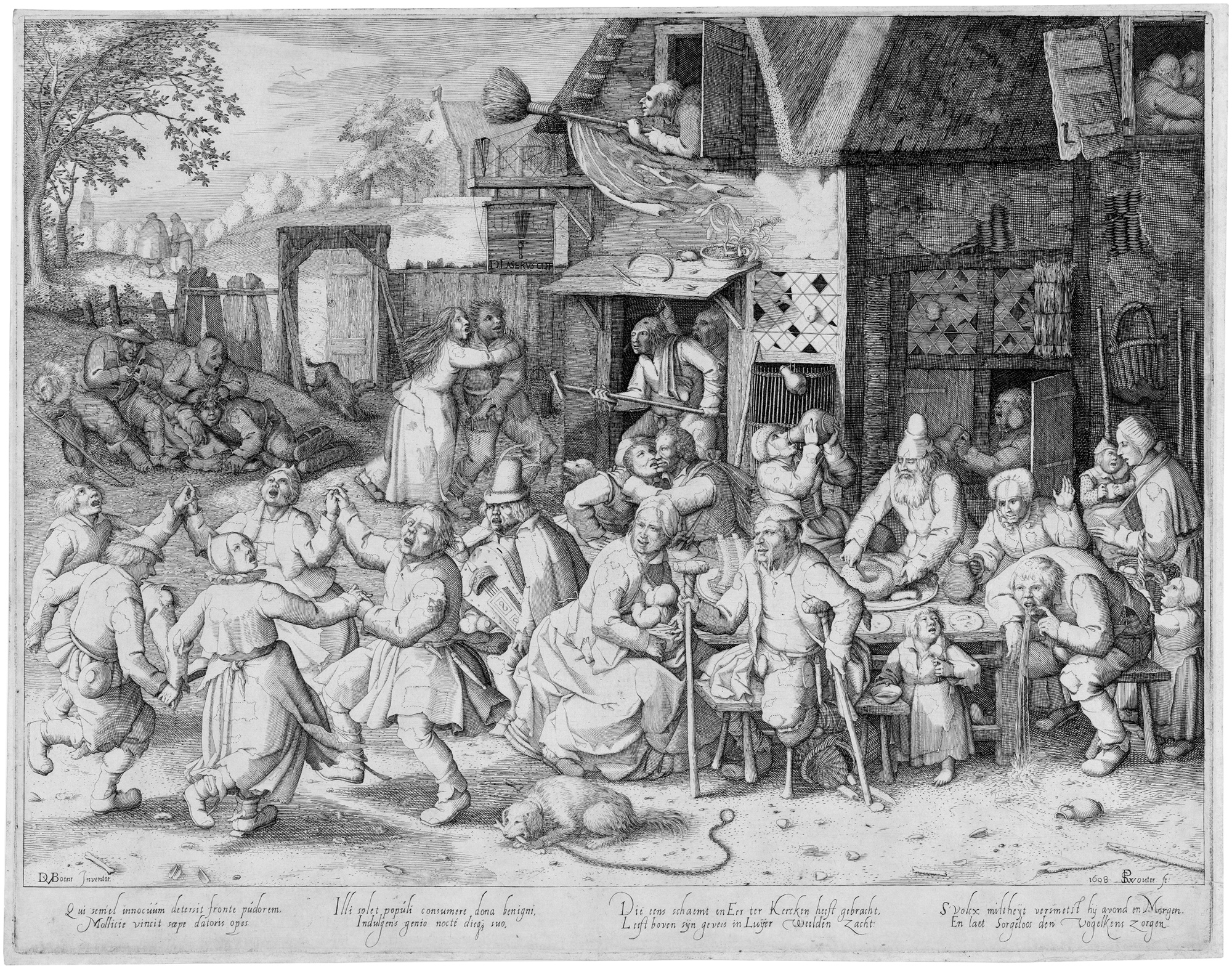Loading the page ...
Pieter Serwouters
(1586 Antwerp – 1657 Amsterdam)
The Beggars’ Inn. Etching. 27.7 x 35.8 cm. 1608. Hollstein 17, before I (of IV).
In his early years the Antwerp-born engraver, etcher and draughtsman, Pieter Serwouters, worked mainly after inventions by David Vinckboons und Adriaen van de Venne. He also produced a small number of very finely executed portrait engravings after his own inventions as well as numerous title pages. From about 1622 Serwouters was active in Amsterdam. The present print, one of the artist’s main works, stems from his early days in Antwerp. It is based on a preliminary drawing by David Vinckboons which is now in the Ashmolean Museum in Oxford.
The very finely executed etching – a veritable gem of Flemish genre printmaking – illustrates the enduring inspirational influence of the pictorial traditions initiated by Serwouters’ great predecessors, Hieronymus Bosch and Pieter Brueghel. The iconographical complexity of the subject matter and its satirical, moralising tone are characteristic of humanistic emblem books at this time. There is a detailed analysis of the picture by Ger Luijten in the exhibition catalogue Spiegel van Alledag. Nederlandse genreprenten 1550–1700. Amsterdam 1997, No. 17, pp. 111–114. It centres around the beggars and tramps who have gathered outside an inn of ill repute and are indulging in gluttony, dancing and amorous activities with great gusto. These are not people who have been reduced to penury by some mishap or stroke of misfortune. They are spongers who shirk honest work out of sheer idleness or self-interest.
The turbulent scene is noteworthy for an array of delightful savoury details. Serwouters’ delicate and meticulous etching technique is an effective means of lending colour and atmosphere to the dissolute activities. A little scene in the rear top left corner is very much in the tradition of Pieter Breughel. A couple of honest beggars have turned their backs on the depravity and are making their way along a sandy path towards the horizon where a church tower serves as a figurative symbol of the road to morality and salvation.
Serwouters’ etching must have enjoyed tremendous popularity over a long period because the print was published in several new editions. This led to an erroneous description in Hollstein. The Haarlem publisher, Claes Jansz. Visscher, who came into possession of the copper plate at a later date, had it completely reworked with a burin, as a result of which this version was regarded to be a copy. A further edition was published by Abraham Allard in 1713. Our print is an unrecorded earliest state. The engraved title “Smetsende Bedelars (The Beggars’ Inn)” on the cross-beam of the inn sign is missing, as is the address of the publisher, Cornelis Jansen. The print is extremely rare in this first state. Only two other impressions are known. These are in the Städel Museum in Frankfurt and the Fondation Custodia in Paris.
A superb, finely differentiated and nuanced early impression with narrow margins around the inky platemark. Minor ageing, otherwise in perfect condition.
